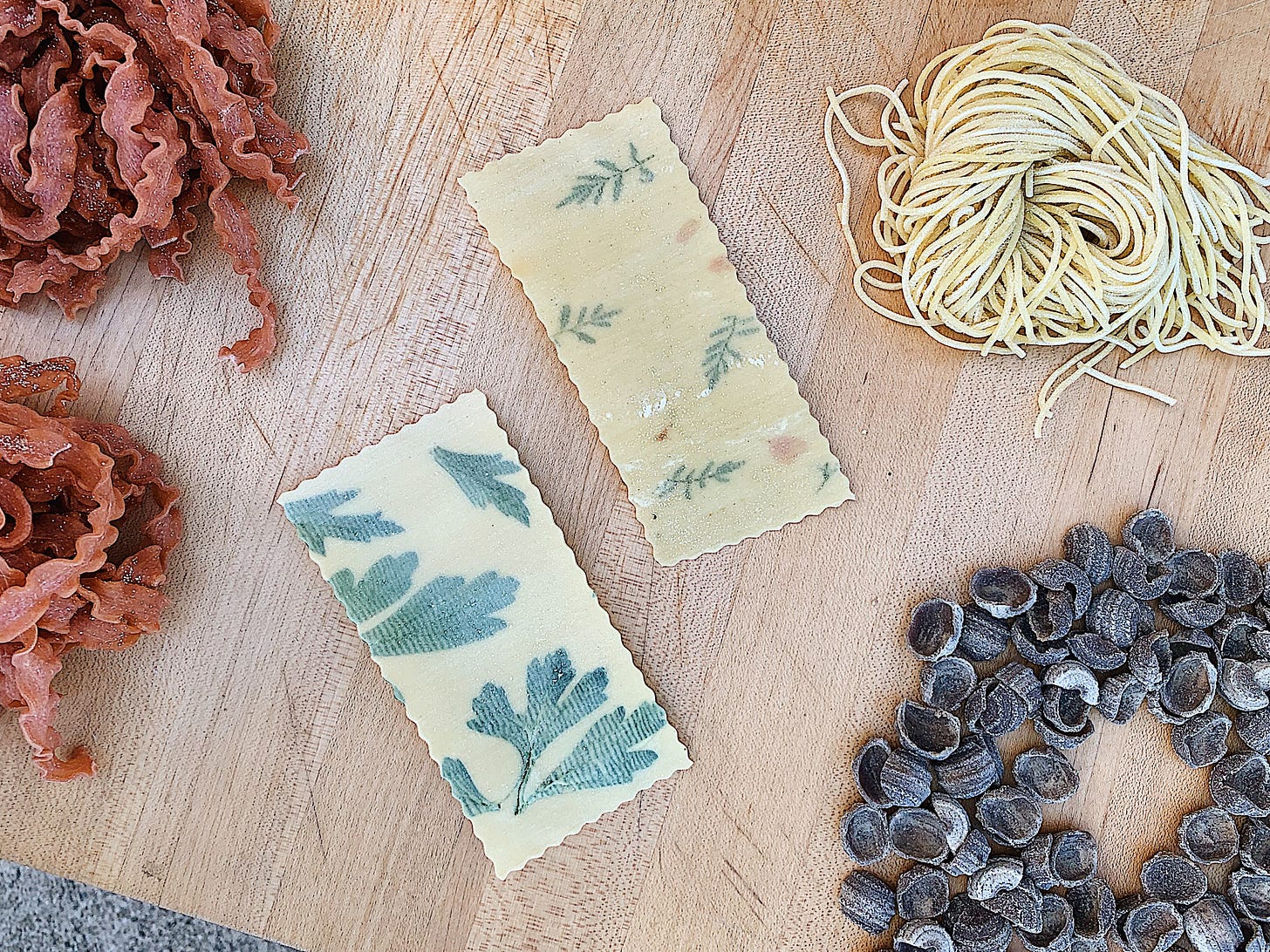Welcome to the final installment of ‘Waves of Grain,’ a four-part series about small grains! This series was inspired by my research for a Richmond Magazine story now in the current issue (October, 2024).
Throughout October, we looked at small grains through the lenses of brewers, farmers, and millers. To wrap up the series, we’re talking about the most prolific end users of small grains, bakers. If you love bread and/or pastries, you’ve got a great reason to be invested in the local grain economy—these grains bring exciting flavors and improved nutrient content to your beloved baked goods.
But first, we have a winner to announce! Last week, I asked readers to share a favorite baking recipe for a chance to win a copy of The Miller’s Daughter, and the results are in! Congratulations, Caylor Feeley, you’re our winner! Caylor shared this recipe for Edna Lewis’ Peach Cobbler. If you make it, try switching out one cup of AP flour for spelt or rye!
In Their Words

I sat down with Sub Rosa Bakery owners Evrim and Evin Dogu at their milling site at Triple Crossing Brewery. Sub Rosa uses a New American Stone Mill to mill grains three days a week for about eight hours a day, generating around 1300 pounds of flour per week. Evrim could fill volumes with his vast knowledge and experience around working with small grains, so our interview went far beyond the bounds of my story. One of the most interesting parts of the discussion was Evrim’s stance on what terroir really means.
Repeatedly in interviews for this story, the folks who work with these grains raved about their unique terroir, a concept that, according to Merriam-Webster, means, “the combination of factors including soil, climate, and sunlight that gives wine grapes their distinctive character,“ here, of course, applied to flour rather than wine. Dogu argues that this idea of terroir is incomplete.
I wanted to highlight Evrim’s concept of terroir here because I think it’s an important thing to consider—this idea that terroir is more than the soil and climate, it’s also the people and traditions that inform how and why a crop is grown and used. It’s a super interesting positioning of terroir with a human element, and I would love to know what more people think about this, so read what Evrim has to say and then sound off in the comments.
Evrim Dogu on terroir…
I think what real terroir is, to me, is the feeling that you're connected to the food you eat. I think if you're going to narrowly define terroir as only the flavor that comes from this land, I think that's just too narrow of a definition. Terroir should include the health of this community in this land, or the people who live here and eat here. We are in a relationship where we're creating food together and we're enjoying it together, and then that feeds back into why we're growing the thing. There's just a very simple feedback loop that has been broken in the modern era, where people used to be more connected to the land, and so they knew what they would like to eat and what they had a connection to, and that was a relationship that you created over hundreds and hundreds of years.
To me, real terroir is creating a food culture that has that value instilled in it. I think real terroir means, the feeling I get from this place, from this food. I think it's much more driven by the feeling of it and the sharing of it. Flavor can be a component of it. So, so forgive me if I say, out the gate, like, oh, it's bullshit. But I think that the tendency is to focus on that, whether it's in wine or not. And I think the cultural ramifications are either seen as woowoo or they're not talked about at all. And I feel like that's the real thing that we should be talking about, because that's what we don't have. That's what terroir should be aiming at. It's the really the terroir is the the flavor that's coming out of the land. I want to call terroir ‘the human response to the land.
To me, this quote speaks to the importance of the small grain economy itself. The movement is reclaiming something essential that was lost over time, putting the farmers and millers back in the process and, in doing so, revealing a depth of characteristics that are inherent when you work with products that are grown locally and processed thoughtfully.
Maybe you can’t taste the specific qualities of the soil—perhaps that’s hoping for too much—but the flours made from these grains undeniably have unique, exciting flavors. There’s more there therein. In comparison, even the higher quality flours you find in the supermarket lack that essence.
Where to Find Locally-Grown & Milled Grains in Richmond
If you’re local to Richmond, VA, find Sub Rosa Bakery’s flours at their bakery and at the Birdhouse Farmers Market.
Not interested in baking your own? Head to Pizza Bones, Metzger Bar & Butchery, and Conejo to taste the magic they create with Sub Rosa’s stone-milled flour. Or grab some pasta from local-grain devotee Laine Myers of Oro Pasta (at the Birdhouse and St. Steve’s Farmers Markets).
Or, shop online from Grapewood Farm, Deep Roots Milling, Wade’s Mill, or check out CGA’s directory of producers for more options.
How to Bake with Locally-Grown & Milled Grains: Sourdough Spelt Waffles
For a lot of home bakers, myself included, there’s some intimidation around working with small grains. What to make? How to adapt recipes to these alternative flours? It can be much easier to bury your head in a bag of Gold Medal Flour, but once you get a few go-to recipes under your belt, you’ll find these grains are a joy to work with.
During our interview, Evin shared one of her favorite uses for Sub Rosa’s spelt flour, which they mill from spelt grown by Grapewood Farm. She uses spelt or a combination of spelt and all-purpose flour in this recipe for Sourdough Waffles, an excellent weekend baking project. Pro tip: double the recipe and freeze the leftover waffles for an easy weekday breakfast.
Thanks for reading, and happy baking! Until next time…
xox
SG












Great read, Stephanie, thank you!